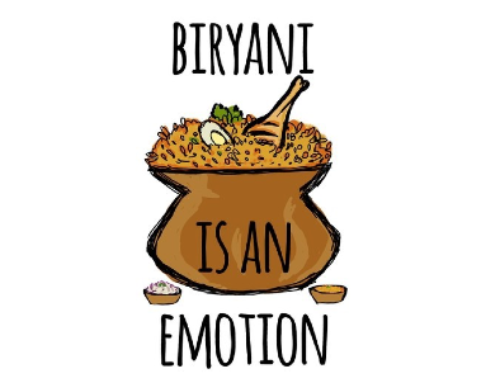
Web and technology go hand in hand in today’s technological world. What started off as a humble attempt to share information has led to a revolution, making information accessible, irrespective of distance and time.
What is web technology?
Web technology is a means by which computers communicate with each other. Like humans who use different languages to communicate with each other, computers use ‘markup language’ and ‘media packages’ to interact. A markup language in simple term is a language which is a combination of words and symbols used to process any given information. Media packages are a set of applications that aid in human-computer and computer-computer interactions.
How did it all begin?
The term ‘web’ was coined by Tim Berners-Lee. Tim along with his CERN (European Organisation for Nuclear Research) colleague, Robert Cailliau developed and coined the term ‘world wide web’ in 1989. The initial idea behind ‘WWW’ was to aid in information exchange among scientists in universities and institutes across the world.
Tim’s contribution to web technology has been impactful and has paved way for the modern web technologies. The cornerstones laid by Tim which have revolutionised the concept of web technologies are:
1. HTML — Hypertext Markup Language
This is the language used to create web pages and web applications.
2. URI — Uniform Resource Identifier
This is the unique address of a resource and is commonly called URL (Uniform Resource Locator).
3. HTTP — Hypertext Transfer Protocol
This is a set of rules for transferring files through the world wide web.
The Versions
The introduction of ‘world wide web’ led to the development of different versions of the web, each being an evolved version of the other.
The developments that have occurred since the ‘world wide web’ are as follows:
a. The Web 1.0
This is the first generation of the world wide web that was created by Tim Berners-Lee, it lasted from 1989 to 2005. This was considered as a ‘read-only’ web.
Web 1.0 made use of technologies like HTML, HTTP and URI.

Characteristics:
The following are some of the characteristics of web 1.0:
· Non-interactive pages — Web 1.0 had static pages that did not have any interactive features. Websites under 1.0 focussed mainly on providing information.
· Storage of content — The websites made use of files to store content, unlike the modern approach of storing content on a database.
· Layout of website — Websites under 1.0 did not focus much on the look and feel of the pages.
· Basic Language — Web 1.0 made use of basic HTML
· Visitor Comments — Visitor comments under Web 1.0 were added to ‘guestbooks’ that weren’t directly attached to the contents of the website.
Limitations:
Being the most basic form of web technology, Web 1.0 suffered from the following drawbacks:
· Lack of machine compatible content — Web 1.0 lacked machine compatible content and the pages could only be understood by humans.
· Lack of interactive web page — The web pages were static and did not provide scope for interaction between the user and the website.
b. The Web 2.0
This is the second generation of web. The term ‘Web 2.0’ was introduced by Darcy DiNucci and coined by Dale Dougherty and Tim O’Reilly at the O’Reilly web media conference in 2004. This is also known as the ‘read-write’ technology.
Web 2.0 comprises of social media sites, blogging sites and news sites. It includes Facebook, Instagram, WordPress, Wikipedia, Reddit, etc. The basic idea behind the introduction of Web 2.0 was to enable human interactions.

Characteristics:
The following are the characteristics of Web 2.0:
· Interactive pages — Unlike Web 1.0, Web 2.0 is all about interactive pages. The technology aims to keep the pages as interactive as possible. Web 2.0 in simple terms is about connecting people with people.
· Content by the users — Web 2.0 made it possible for the users to contribute to the content of a website.
· User experience — The development of Web 2.0 shed light on aspects pertaining to user experience.
· Variety of media — Web 2.0 introduced the people to a variety of media like networking sites, blogs and news sites.
· Scope for learning — This web technology made it possible for learners to be actively involved in the process of learning by tapping into vast sources of information and connecting with other learners.
Limitations:
Web 2.0 has certain limitations like:
· Constant updates — An improvisation in technology has made upgradation mandatory. Technologies in Web 2.0 are subject to constant changes and updates.
· Overdose of Information — Web 2.0 has provided the users with a vast source of information. This has in turn led to an overdose of information.
c. The Web 3.0
Web 3.0 is the third generation of web technology. The term was coined by John Markoff in 2006. It is also termed as ‘executable web’ or the ‘read-write-execute’ technology.
Some of the technologies in Web 3.0 include smart search, virtual shopping, virtual worlds, blockchain technology, digital encryption and smart user interface.

Characteristics:
Web 3.0 is characterised by certain features like:
· Usability — Web 3.0 is known for its usability and simplicity of website.
· Semantic Web — Web 3.0 revolves around the concept of ‘semantic web’, i.e., a framework that permits sharing and usage of data across applications.
· Artificial intelligence — The third generation of web technology comprises of artificial intelligence where search engines provide smart and user-related results.
· Accessibility — Web 3.0 comprises of technology that the user can make use of at any time, through any means and at any place.
· Personalisation — Web 3.0 provides a higher scope for personalisation as compared to Web 1.0 and 2.0.
Limitations:
Web 3.0 consists of certain limitations, like:
· Need to stay updated — In order to reap the benefits of the technology, a user must stay updated with the latest trends in the software and devices. Resorting to the use of a less-developed device may not yield the desired output.
· Complications — Despite being easy to use and faster, Web 3.0 has its own complications with regard to the user’s knowledge of the technology.
How do the web technologies differ from each other?

The Future
While people are still using second generation technology and familiarizing themselves with the third generation, concepts like Internet of Things (IoT), Augmented Reality (AR), Gesture Technology and Location Based Intelligence are also being researched and introduced in a phased-out manner. Web 3.0 is bound to make way for Web 4.0, which would be an evolution of aspects in the third generation.




